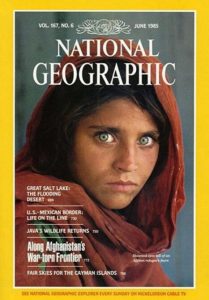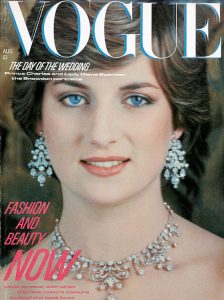Photography
is a powerful tool for visual expression that has played a significant role in society since its invention. Beyond its aesthetic function, photography has proven to be a tool that can impact perception, raise awareness and foster change in society. It has the ability to tell stories without words. Through a single image, an emotion can be expressed, a moment in life can be captured, or an experience can be documented. Photographs can move, inspire and build a deep connection with the viewer. By telling visual stories, photography can inspire empathy, shift perspectives, promote dialogue about important topics, and influence the viewer’s tastes and desires in some way.
There is a before and after of many images that became icons by documenting historical, political, scientific and cultural events. Throughout history, photographs have witnessed and captured transcendental moments, becoming valuable visual records for future generations, allowing them to understand and learn from past events.
Here are a sample of photographs from magazines that became iconic and worth remembering thanks to the history behind them and the excellent eye of many photographers to capture just the right moment.
Political, historical, social, scientific, fashion… a compilation of images that defined an era and touched the whole world.
GLAMOUR
In August 1968, this Glamour cover featured the first black girl Katiti Kironde, a Harvard student. This photograph became a symbol of racial inclusion and was the best-selling edition in the history of Glamour.


LIFE
On August 28, 1964 LIFE magazine dedicated its cover to the foursome with a photograph taken in England by John Dominis. The Beatles were returning to the United States for a second tour, and this time not as an emerging group, but as a worldwide star group.
LIFE
On April 30, 1965, LIFE magazine featured the work of the great Swedish photojournalist Lennart Nilssoen on its cover, showing an 18-week-old fetus in its amniotic sac. Nilsson was the first photographer to portray the development of human life, and at the time that was simply something out of the ordinary.


LIFE
This would be the most famous edition of LIFE magazine; The landing on the Moon in 1969, portraying astronaut Buzz Aldrin and reflected in his helmet Neil Armstrong taking the picture. The fame of this shocking photograph is so huge that a single copy of this volume is on sale for thousands of dollars.
ROLLING STONE
In 1981 Rolling Stone magazine published on its cover the last photograph taken of John Lennon before his tragic passing. A work done by Annie Leibovitz. The singer insisted on being portrayed with his mate Yoko Ono.


NATIONAL GEOGRAPHIC
In June 1985, National Geographic published this cover at a refugee camp (in Pakistan) by photographer Steve McCurry. The icy eyes of Sharbat Gula, a 12-year-old Afghan orphan.
VANITY FAIR
In August 1991 Vanity Fair broke all taboos by showing for the first time a naked pregnant woman, with Demi Moore posing for this controversial photograph portraying the sensuality and pride of the changing body during pregnancy.


VOGUE
In 1950 Vogue shows on its cover an image of the photographer who revolutionized fashion photography Irving Penn Maestro, wearing his favorite colors: black and white, making the portrait the star.
PLAY BOY
Playboy publishes its first magazine in 1953; the famous actress Marilyn Monroe appears on the cover, and inside the magazine the American muse can be seen nude posing. A work done by photographer Robyn Beck.


INTERNATIONAL NEWS
On March 14, 1951, scientist Albert Einstein celebrated his 72nd birthday at the Princeton Club. Tired of being photographed by reporters, in a gesture of annoyance he stuck his tongue out at photographer Arthur Sasse, who asked him for one last photo before leaving. The scientist liked the photo so much that he had several copies printed and signed with the phrase “The extended tongue shows my political opinions” and gave them as a gift to his friends.
NEW YORK
On September 24, 2001, New York magazine placed on its cover a photograph that would end up being very significant: The famous skyline of the city forever changed and the image became a symbol of loss; but also of hope. “It was an attack on us,” the editors would write.


FORBES
On October 01, 1990, Madonna appears for the first and only time on the cover of the American magazine Forbes with the title: “America’s smartest businesswoman?” Being the first woman to star on the cover of the famed magazine, who also devoted a four-page article entitled “A head for sin and a body for business”.
VOGUE
For the January 1950 cover of Vogue, German photographer Erwin Blumenfeld applied an extraordinary amount of light to erase a model’s features, leaving only an eye, mouth and a mole. His photos mirrored the energy and optimism of Manhattan in the 1940s and 1950s.


VOGUE
In August 1981, Vogue magazine featured Lady Di on its cover, honoring her engagement to Prince Charles of England, which would have been on July 29, 1981. The photographer Lord Snowdon was the one who took the image.
Photography can be a powerful tool to raise awareness and inspire a social transformation. Throughout history there have been images that have turned society’s mindset entirely upside down about one or more topics.
Pictures with powerful stories, images telling the truth, images that have come to stay and have a strong place in our minds.
Photographs can challenge the established rules, question reality and encourage social justice.
It is a way to portray the diverse nature of society, by capturing the beauty and uniqueness of our differences, challenging stereotypes, breaking down borders, encouraging inclusion and allowing voices and stories to be visible and recognized.
In the digital and social media age, photography has become even more relevant and influential. Online platforms allow photographs to reach mass audiences in a matter of seconds, amplifying their impact and the outreach of their message, allowing individuals from different parts of the world to share their perspectives and experiences, creating a global dialogue and fostering empathy and understanding across cultures.
In an increasingly visual and connected world, photographic images have the ability to inspire, educate and change the way we perceive and relate to the world around us.




No Comments